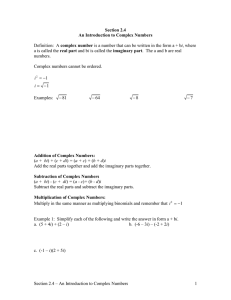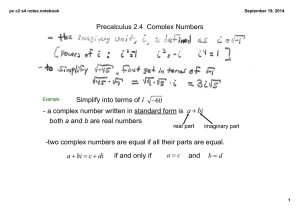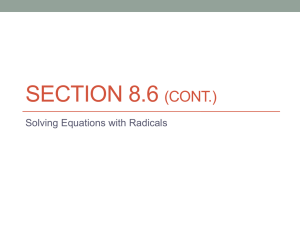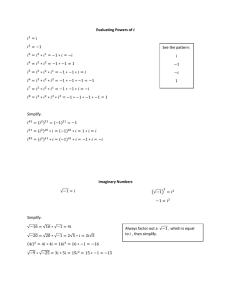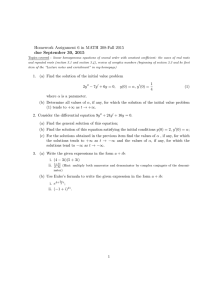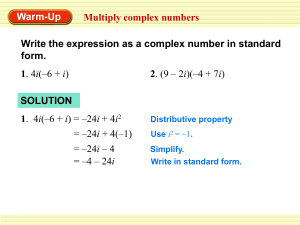Computations with Complex Numbers
advertisement
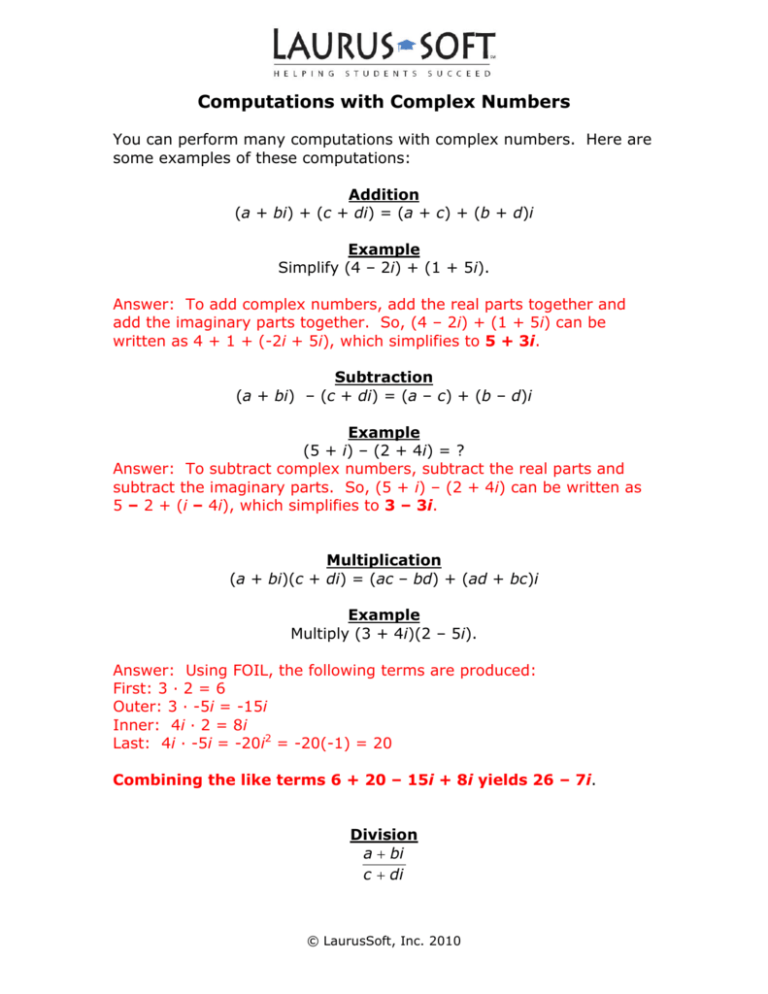
Computations with Complex Numbers You can perform many computations with complex numbers. Here are some examples of these computations: Addition (a + bi) + (c + di) = (a + c) + (b + d)i Example Simplify (4 – 2i) + (1 + 5i). Answer: To add complex numbers, add the real parts together and add the imaginary parts together. So, (4 – 2i) + (1 + 5i) can be written as 4 + 1 + (-2i + 5i), which simplifies to 5 + 3i. Subtraction (a + bi) – (c + di) = (a – c) + (b – d)i Example (5 + i) – (2 + 4i) = ? Answer: To subtract complex numbers, subtract the real parts and subtract the imaginary parts. So, (5 + i) – (2 + 4i) can be written as 5 – 2 + (i – 4i), which simplifies to 3 – 3i. Multiplication (a + bi)(c + di) = (ac – bd) + (ad + bc)i Example Multiply (3 + 4i)(2 – 5i). Answer: Using FOIL, the following terms are produced: First: 3 · 2 = 6 Outer: 3 · -5i = -15i Inner: 4i · 2 = 8i Last: 4i · -5i = -20i2 = -20(-1) = 20 Combining the like terms 6 + 20 – 15i + 8i yields 26 – 7i. Division a + bi c + di © LaurusSoft, Inc. 2010 When dividing by a complex number, remember that i = − 1 , so it is as if there is a radical in the denominator. Therefore, the radical must be mathematically removed. To remove the imaginary part of the denominator, multiply the denominator by its complex conjugate. For example, c + di and c – di are complex conjugates. Then, multiply the numerator by the same complex conjugate. a + bi c − di c + di c − di Example Simplify the expression. 3−i 1+ i Answer: To simplify, you need to multiply the numerator and the denominator by the conjugate of the complex denominator. 3 − i 1 − i 3 − 3i − i + i 2 3 − 3i − i + (−1) 2 − 4i 2 4i = = = = − =1 − 2i 1 + i 1 − i 1 − i + i − (−1) 2 2 2 1 − i + i − i2 © LaurusSoft, Inc. 2010
